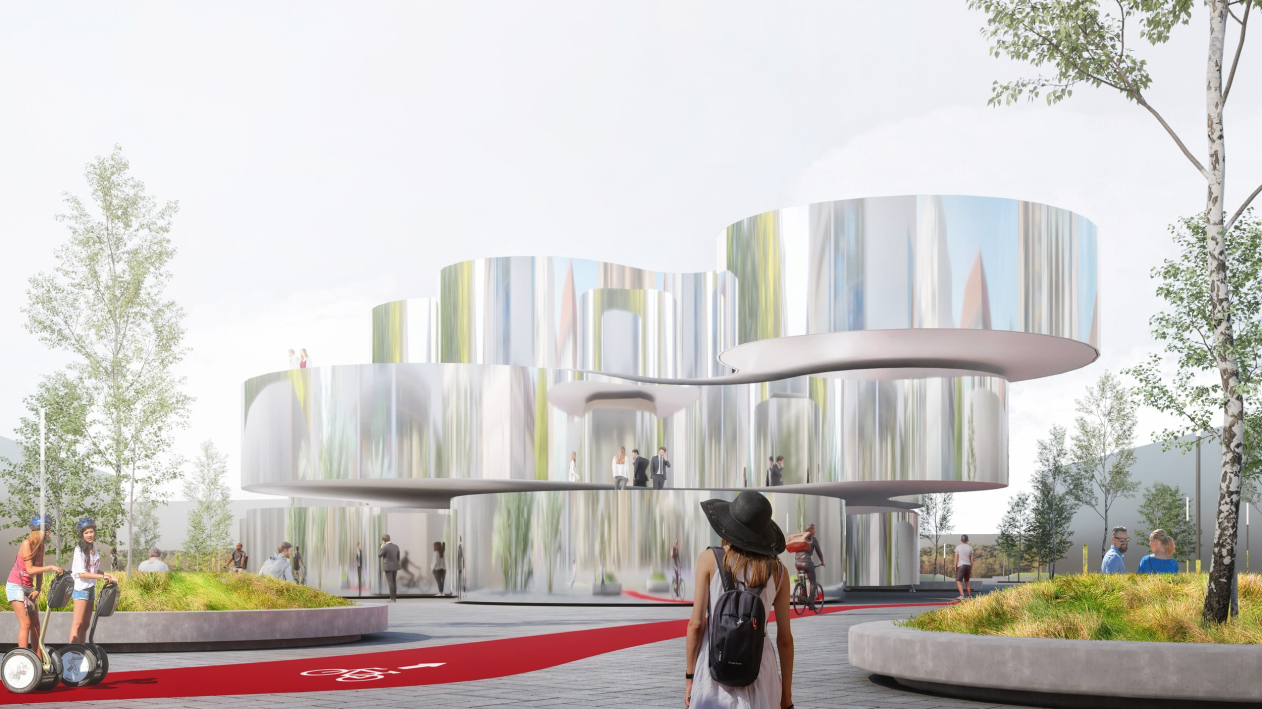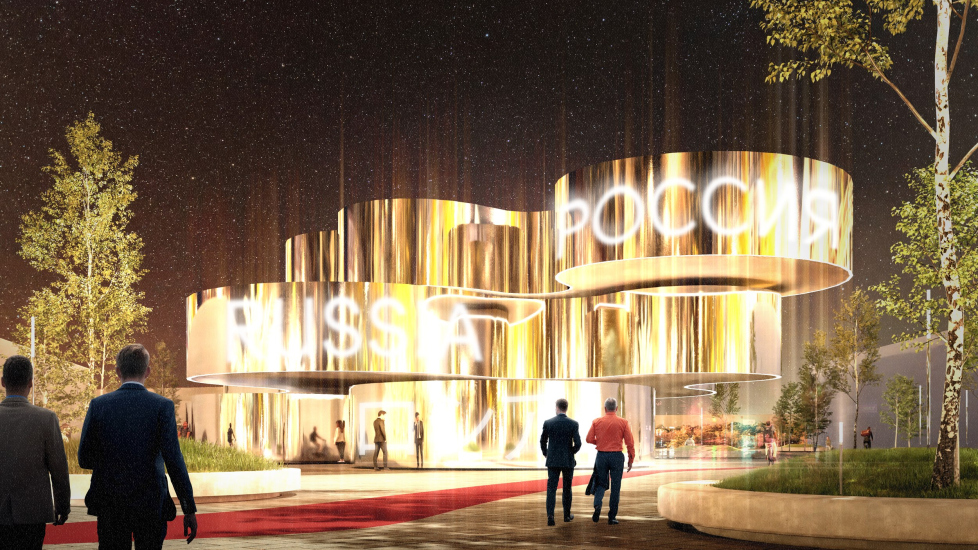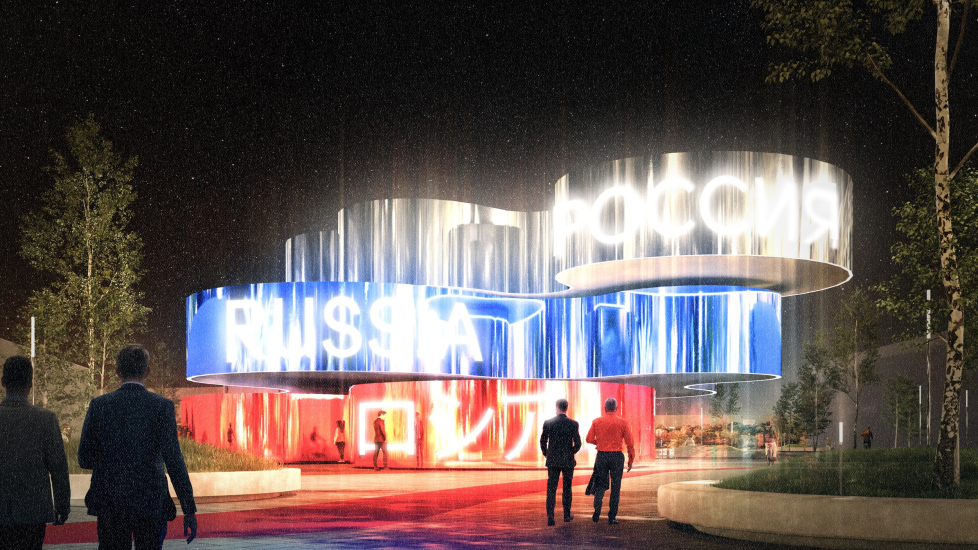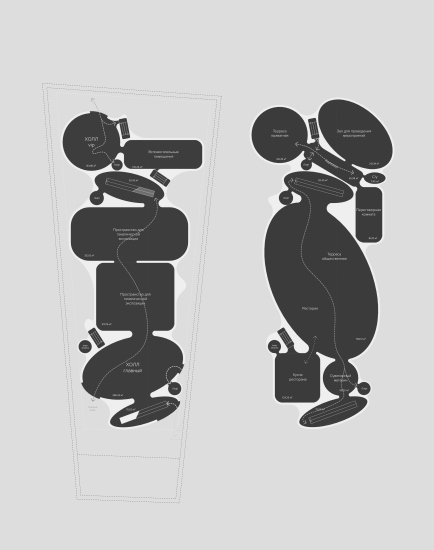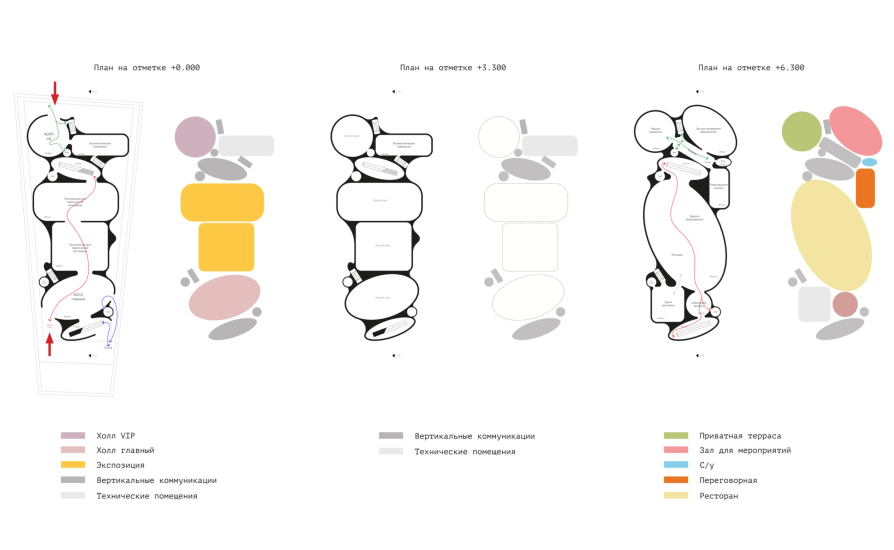While the pavilion in the second competition was supposed to be dedicated to Time, the theme of the pavilion in the first competition was different – it was planned to be dedicated to the digital twin technology, i.e., a digital model that completely replicates the parameters of a real object and allows tracking and modeling its processes.
Sergey Nebotov explains that there was very little time to work on the project, literally 2 or 3 days; the competition was akin to a short-term student project, the elaboration was minimal, and there were only a few images. At that early moment, the location of the pavilion was also not defined; the architects were offered to choose from several similar, long, pencil-shaped A-type pavilions, located in the eastern part of the exhibition in the “Expanding Life Opportunities” sector oriented with their ends to the plaza. Anyway, this location is very close to the one that was later considered final, and the length of the pavilion’s site is the same, about 90 meters.
The “Novoe” architects focused on the theme of the “digital twin”, naming their pavilion “Mirage”, and taking the 1900 Vrubel painting “Swan Princess” as a starting point: “The Swan Princess is a creature of dual nature, she embodies two elements – the dark, cold water and at the same time the heavenly element, soaring upward. The artist tries to capture the moment of the maiden’s transformation into a bird, a miraculous metamorphosis of forms”. The architects also specify that they sought to capture the transitional state of Russian society; it was the end of 2021.
Ultimately, the architects came up with a composition of several bands of curved mirrored facades with integrated LED lighting.
Russia Pavilion at the EXPO in Osaka. The competition draft for the preliminary concept. “Mirage” pavilion
Copyright: © Novoe Architects
During the day, it was meant to reflect everything around it, while in the evening, the media part of the façade would complement reality with images, inscriptions, patterns, and colors.
The bands of the facades wind not in a random fashion, but in a quite motivated way, as the pavilion is literally assembled from volumes of various shapes: squares and rectangles, ovals and circles, larger and smaller ones – the plan resembles an assemblage of well-hewn pebbles, all-but-identical, yet still different in their original shape.
The plan is reminiscent of the experiments of 17th-century Baroque architects, and the radical ones, too – not like Bernini, but like Borromini – where ovals, exedrae, and other non-trivial geometric figures coexisted, embellishing the space.
No less does the plan resemble the emblem of EXPO 2025, which was already known by that time, shown in 2020 – the emblem is composed of different-sized circles and ovals, asymmetrically assembled in a ring. The resemblance is indirect – it would be an embarrassment if it was – but it makes Sergey Nebotov’s idea internally akin to the symbol of the World Expo. It’s curious that the architects don’t mention it – either they didn’t think about it at all or they thought that if everything goes ahead, it will be understood anyway.
EXPO 2025 emblem
Copyright: © Novoe Architects
The fact is that the twists of the mirrored bands are not arbitrary, but motivated by the shape and volumes of the halls. Since the forms are juxtaposed with a significant overlap, “terrace” balconies are formed, from which one could survey the surroundings of the exhibition, and the cantilevers.
Mirror-like quality, it should be noted, in this project extends far beyond the facades. On the operable roof, Sergey Nebotov proposed a Water Garden – essentially, a pool. According to the concept, you could sit by the water, or even walk on it, but most importantly – it would reflect the sky, emphasizing that we have one sky, common to all. “One Sky” is also one of the ideas of EXPO 2025.
So mirrors were everywhere in this project. Of different kinds.

